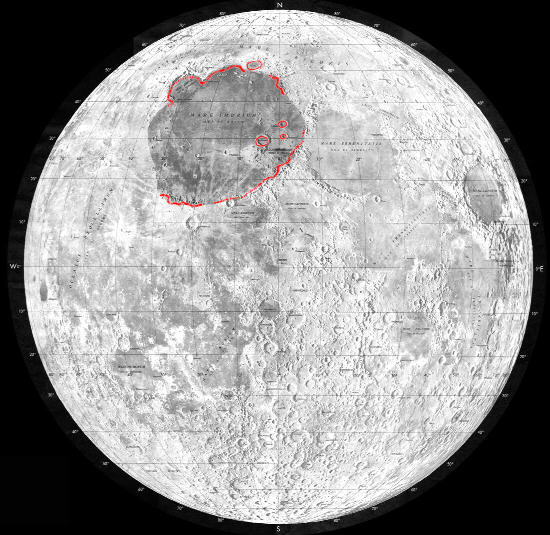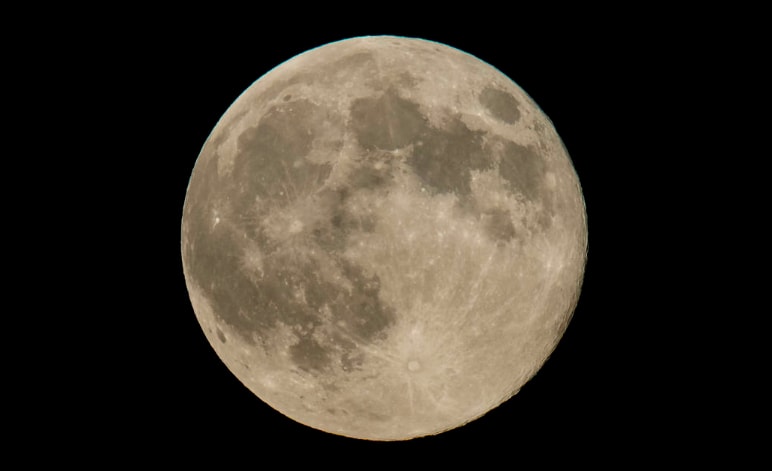Have you ever seen the Man in the Moon?
Nope, not that guy.
Ummm... that's a little closer, but still not exactly what I mean. The "Man in the Moon" is a reference to the way in which features on the Moon can look like a human face, especially from certain angles, distances, and at certain times of the year.
Take a look at this photo.
Can you see it? It can be a little difficult to see when the Moon is so large. But a little further back in the distance, a face starts to appear...
It's kind of there, isn't it?
Tons of craters on the Moon
Whether you feel you can truly see it or are just playing along because you don't want to call me crazy (thanks for that!), here is something that isn't an illusion. The many features of the Moon are the result of ancient collisions with thousands of flying space rocks. These collisions occurred during a far more unstable period in our solar system's history, when many of the planets were still not quite fully formed and their orbits were finding their current positions. These scars left behind on the Moon's surface (a.k.a. craters) have remained intact because without an atmosphere to create winds, nothing on the Moon's surface goes anywhere. It's all perfectly preserved... at least until something else comes along.
The great majority of the space rocks that hit the Moon weren't terribly large. In fact, many of them would be destroyed by Earth's atmosphere if they approached us and never even reach the ground (thank you, atmosphere!). But a new study is claiming that the "right eye" of the Man in the Moon was the result of an asteroid that no planet would ever want to mess with.
A protoplanet
This artwork shows an asteroid named 624 Hektor that orbits Jupiter. It is a similar size to the asteroid that hit the Moon. (Getty Embed)
This asteroid collided with the Moon about 3.8 billion years ago. The new study estimates its size at 250 km (150 mi.) across and that it would've been travelling at about 70,000 km/h (40,000 mph). That's really big and really fast. So big, that it would've been what scientists call a "protoplanet". This is a space rock that is large enough to attract other pieces of rock and dust and gas, and potentially become a planet itself! Instead though, it just crashed into the Moon.
The collision would've showered Earth with hundreds of small fragments of rock, especially since the Moon's orbit was much closer to Earth at this time (likely about twice as close). The name of the crater that it created is Mare Imbrium, which is Latin for "Sea of Showers". (It is called a "sea" because from a distance, it looks like a body of water. In reality, it's really just a low, wide, flat plain which reflects the light of the Sun differently than the rest of the Moon.) Mare Imbrium is 1,200 km (750 mi.) wide. This makes it one of the Moon's biggest features. This is it here.

(Wikimedia Commons)
Beautiful, right? Now do you see the Man in the Moon? Remind me to thank him for taking that asteroid collision instead of us!
 The Moon's quiet landscape is full of scars from asteroid collisions in the past. (©Nasa.gov)
The Moon's quiet landscape is full of scars from asteroid collisions in the past. (©Nasa.gov)










I hope the scientists keep making more discoveries about the moon!
Alder age 7